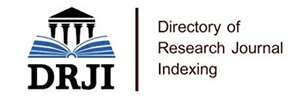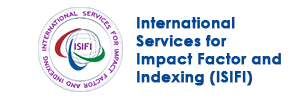
Journal Basic Info
- Impact Factor: 1.995**
- H-Index: 8
- ISSN: 2474-1647
- DOI: 10.25107/2474-1647
Major Scope
- Robotic Surgery
- Neurological Surgery
- Breast Surgery
- Orthopaedic Surgery
- Obstetrics Surgery
- Otolaryngology - Head and Neck Surgery
- Transplant Surgery
- Endocrine Surgery
Abstract
Citation: Clin Surg. 2021;6(1):3156.Research Article | Open Access
A Review of Visual and Endocrine Outcome Following Surgery for Pituitary Adenoma in a Tertiary Hospital
Ugwuanyi Charles1*, Anigbo Anthony1 , Nwaribe Emeka1 , Okpata Cyril1 , Ayogu Obinna1 , Salawu Morayo2 , Ekumankama Obasi2 , Paul Jibril3 , Arua Chinedu4 and Arewa Folusho
1 Neurosurgery Unit, National Hospital Abuja, Nigeria 2 Neuroanasthesia Unit, National Hospital Abuja, Nigeria 3 Neuropathology Unit, National Hospital Abuja, Nigeria 4 Oncology and Radiation Medicine Unit, National Hospital Abuja, Nigeria
*Correspondance to: Ugwuanyi CU
PDF Full Text DOI: 10.25107/2474-1647.3156
Abstract
Background: Pituitary adenomas present with hormone and visual dysfunction requiring surgical treatment. Evaluating benefits of treatment becomes expedient in our emerging tertiary practice. Aims and Objectives: Evaluating benefits of treatment pituitary adenomas in a tertiary hospital, North Central Nigeria. Methods: Retrospective review of cases of surgery for pituitary adenomas (Jan 2013 to Dec 2017). Study parameters were visual and endocrine functions evaluated up to 12 months post-op. Simple descriptive statistics was used for data analysis. Results: Total 28 out of 57 cases (49%) had surgery. M:F 3:1. Mean age of 44 years (range 21 to 72 years). 23/28 (82%) were referred from eye clinics. Commonest presentation was visual impairment (100%). Bitemporal field loss in 12/28 (42.8%) and complete blindness in 10/28 (35.7%). Low cortisol and low thyroid hormone were observed in one case each (3.5%). Of the four functional cases, three were prolactin secreting and one growth hormone secreting. Mean time to presentation was 29 months (Range- 1 to 108 months). Commonest neuroimaging modalities were contrast enhanced CT and MRI. Commonest pre-op diagnosis was non-functional adenoma 24/29 (85.7%). Commonest surgical approach was transsphenoidal surgery 20/28 (70.1%). CVF at 12 months follow up recorded visual improvement in only 11/28 (39.2%). Hormone profile at 12 months showed improved status from 21/28 (75%) to 25/28 (89%) but residual prolactinemia in 2/28 (7.1%) and persisting GH secreting in 1/28 (3.5%). Check MRI at 12 months revealed no significant residual/ recurrent tumor and no chiasmal pressure in 16/27 (59.2%). Commonest histology report was pituitary adenoma with diffuse FSH/LH expression in 15/28 cases (53.5%). Further treatments were re-do operation and radiotherapy referral in 3/27 (11.1%) each. Conclusion: Following surgery, a marginal improvement in vision was observed but hypocortisolism and low thyroid hormones were restored to normalcy at 12 months. However, despite surgical/ medical interventions GH remained high at 12 months in lone case of acromegaly and prolactinemia persisted in two out of the three cases
Keywords
Pituitary adenomas; Visual impairment; Pituitary hormones; Transphenoidal surgery
Cite the article
Charles U, Anthony A, Emeka N, Cyril O, Obinna A, Morayo S, et al. A Review of Visual and Endocrine Outcome Following Surgery for Pituitary Adenoma in a Tertiary Hospital. Clin Surg. 2021; 6: 3156..













